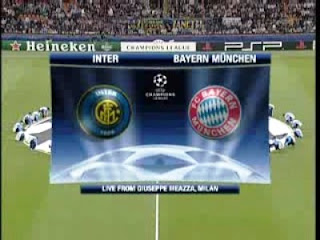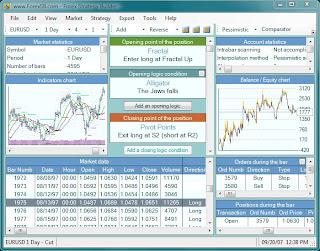يلتقي فريقين مانشستر يونايتد و مارسيليا Watch Manchester United vs Marseille Live اليوم 23/2/2011 الساعة 9:45 مساءً بتوقيت مصر و 10:45 مساءً بتوقيت مكة المكرمة ( السعودية ) و 7:45 مساءً بتوقيت جرينتش ضمن مباريات الذهاب الدور ال 16 من بطولة دورى أبطال أوروبا موسم 2010/2011 Live Streaming Video Football : The UEFA Champions League
مشاهدة مباراة اليوم من هنا
يسعى مارسيليا الفرنسي إلى نقل نجاحه على المستوى المحلي إلى مسيرته الأوروبية، عندما يستضيف مانشستر يونايتد الإنجليزي اليوم في ذهاب الدور الثاني (دور الستة عشر) في بطولة دوري أبطال أوروبا لكرة القدم. ويواجه مارسيليا اليوم اختباراً صعباً للغاية في مواجهة فريق مانشستر يونايتد الذي تغلب على بدايته المتذبذبة هذا الموسم واستعاد مستواه العالي في الأسابيع الماضية ليهيمن على قمة جدول الدوري الإنجليزي ويقترب تدريجياً من استعادة لقبه المحلي.
وفي المقابل، يواجه مانشستر يونايتد اختباراً غامضاً في ظل ارتفاع مستوى مارسيليا في الموسمين الماضي والحالي واستعادة بعض بريقه على المستوى المحلي وتزايد رغبته في المنافسة بقوة على المستوى القاري. وحافظ مارسيليا على سجله خالياً من الهزائم على مدار آخر ثماني مباريات خاضها في الدوري الفرنسي، فحقق التعادل في أربع مباريات وفاز بأربع مباريات، كان منها الفوز في آخر ثلاث مباريات على التوالي.
وتمثل المباراة أمام مانشستر يونايتد أصعب مواجهة يتوقعها مارسيليا أو مديره الفني المتألق ديدييه ديشان، الذي كانت له العديد من الصولات والجولات داخل المستطيل الأخضر كلاعب في أندية عدة وفي صفوف المنتخب الفرنسي، كما يشق طريقه بنجاح حالياً في المجال التدريبي.
ويحتل مارسيليا المركز الثالث في جدول الدوري الفرنسي برصيد 42 نقطة، وبفارق ثلاث نقاط فقط خلف المتصدر ليل، وبفارق نقطة واحدة خلف رين صاحب المركز الثاني. وفي المقابل، نجح مانشستر يونايتد في التغلب على الهزيمة المفاجئة التي مني بها أمام ولفرهامبتون في الخامس من فبراير الحالي، وهي الهزيمة الوحيدة للفريق في 26 مباراة خاضها بالدوري هذا الموسم، وحقق فوزاً ثميناً 2 - 1 على مانشستر سيتي في الدوري قبل أن يحقق فوزاً هزيلاً 1 - صفر على فريق كرولي تاون المتواضع في كأس الاتحاد الإنجليزي السبت الماضي.
ويتربع مانشستر يونايتد على قمة جدول الدوري الإنجليزي برصيد 57 نقطة، مقابل 53 نقطة لأرسنال صاحب المركز الثاني بعد 26 مباراة لكل منهما، بينما يحتل مانشستر سيتي المركز الثالث برصيد 49 نقطة من 27 مباراة.
ولم تكن مسيرة مانشستر يونايتد في الدور الأول لدوري أبطال أوروبا مختلفة عن هذا النجاح، حيث حافظ الفريق على سجله خالياً من الهزائم في المباريات الست بمجموعته. ويأمل الفريق في مواصلة هذا النجاح والعبور إلى دور الثمانية للبطولة على حساب مارسيليا.
وتبدو المشكلة الوحيدة التي يواجهها أليكس فيرجسون المدير الفني الاسكتلندي لفريق مانشستر يونايتد في مباراة اليوم في استمرار غياب ريو فيرديناند عن خط الدفاع بسبب الإصابة. ولذلك، يبدو كريس سمولينج الذي تألق في المباراة أمام مانشستر سيتي هو المرشح الأقوى للعب بدلاً من فيرديناند إلى جوار الصربي نيمانيا فيديتش في مركز قلب الدفاع.
وقال فيرجسون إنه يحترم فريق مارسيليا كثيراً، ولكنه يعتقد أن مانشستر يونايتد يلعب بشكل جيد يكفي لتحقيق نتيجة إيجابية في فرنسا.من جانبه، اعتبر مدرب مرسيليا ديدييه ديشامب أن فريقه سيقوم بكل ما في وسعه لحرمان بطل أوروبا 3 مرات من تحقيق الفوز: “لم يخسروا في دور المجموعات، فريقهم موهوب للغاية هجوميا كما أن دفاعهم يقوم بواجبه كاملا، لا أعتقد أن المباراة ستشهد أهدافا كثيرة”. وأضاف ديشامب الذي قاد مرسيليا كلاعب لنيل لقب 1993: “علينا التسجيل لأن المباراة تقام على أرضنا وفي الوقت ذاته يجب أن تبقى شباكنا خالية”.
مشاهدة , شاهد , مباراة , مانشستر يونايتد , مارسيليا , بث مباشر , لايف , اون لاين , رابط , وصلة , ابغي , مشاهدة , ماتش , مانشستر يونايتد , عاوز , اتفرج , ع الانترنت , مقابلة , لقاء , مباراة , مانشستر يونايتد ومارسيليا , اونلاين , قناة الجزيرؤة الرياضية +3 +4 HD1 , قناة Sky Sports 3 , مجاناً , مباراة مان يونايتد اليوم , مباراة مانشستر يونايتد اليوم , مباراة مارسيليا اليوم , مباريات اليوم
يبحث مانشستر يونايتد، بطل الدورى الإنجليزى، عن حجز تذكرة التأهل إلى ربع نهائى دورى أبطال أوروبا مبكرًا، حين يحل ضيفاً على أوليمبيك مارسيليا الفرنسى، مساء اليوم الأربعاء، فى ذهاب دور الـ16 من الشامبيونزليج.
الشياطين الحمر، الذين غابوا عن منصة التتويج الأوروبى فى العامين الماضيين، يمتلكون السجل الأفضل فى النسخة الحالية من البطولة من حيث الحفاظ على نظافة شباكهم التى لم تهتز إلا مرة وحيدة هذا الموسم خلال ست مباريات خاضها، كما أن "المانيو" فاز فى تسع مباريات من آخر عشرة خاضها خارج ملعبه، وهذا يمنح الفريق أفضلية كبيرة فى مباراة مارسيليا.
ويأمل أبناء سير أليكس فيرجسون، أن يدعموا تفوقهم المحلى حيثُ يعتلى مانشستر صدارة الدورى الإنجليزى برصيد 57 نقطة، بتفوق أوروبى يطمئنهم قبل مباراة العودة المقرر إقامتها فى الـ15 من مارس المقبل.
على الجانب الآخر، يعانى مارسيليا الذى يقوده ديدييه ديشامب، من أزمة فى خط هجومه بسبب إصابات متباينة تعرض لها الثلاثى أندرى جيجان ولويك ريمى وبرانداو وإن كان الأخير قريبًا من المشاركة أساسيًا أمام مانشستر.
وكان مارسيليا، قد حقق نتائج متذبذبة فى دورى أبطال أوروبا، بدأ بهزيمتين متتاليتين أمام سبارتالك موسكو وتشيلسى ثم فاز فى مبارياته الأربع الأخيرة لينهى دور المجموعات فى المركز الثانى من المجموعة السادسة برصيد 12 نقطة.
مشاهدة مباراة اليوم من هنا
يسعى مارسيليا الفرنسي إلى نقل نجاحه على المستوى المحلي إلى مسيرته الأوروبية، عندما يستضيف مانشستر يونايتد الإنجليزي اليوم في ذهاب الدور الثاني (دور الستة عشر) في بطولة دوري أبطال أوروبا لكرة القدم. ويواجه مارسيليا اليوم اختباراً صعباً للغاية في مواجهة فريق مانشستر يونايتد الذي تغلب على بدايته المتذبذبة هذا الموسم واستعاد مستواه العالي في الأسابيع الماضية ليهيمن على قمة جدول الدوري الإنجليزي ويقترب تدريجياً من استعادة لقبه المحلي.
وفي المقابل، يواجه مانشستر يونايتد اختباراً غامضاً في ظل ارتفاع مستوى مارسيليا في الموسمين الماضي والحالي واستعادة بعض بريقه على المستوى المحلي وتزايد رغبته في المنافسة بقوة على المستوى القاري. وحافظ مارسيليا على سجله خالياً من الهزائم على مدار آخر ثماني مباريات خاضها في الدوري الفرنسي، فحقق التعادل في أربع مباريات وفاز بأربع مباريات، كان منها الفوز في آخر ثلاث مباريات على التوالي.
وتمثل المباراة أمام مانشستر يونايتد أصعب مواجهة يتوقعها مارسيليا أو مديره الفني المتألق ديدييه ديشان، الذي كانت له العديد من الصولات والجولات داخل المستطيل الأخضر كلاعب في أندية عدة وفي صفوف المنتخب الفرنسي، كما يشق طريقه بنجاح حالياً في المجال التدريبي.
ويحتل مارسيليا المركز الثالث في جدول الدوري الفرنسي برصيد 42 نقطة، وبفارق ثلاث نقاط فقط خلف المتصدر ليل، وبفارق نقطة واحدة خلف رين صاحب المركز الثاني. وفي المقابل، نجح مانشستر يونايتد في التغلب على الهزيمة المفاجئة التي مني بها أمام ولفرهامبتون في الخامس من فبراير الحالي، وهي الهزيمة الوحيدة للفريق في 26 مباراة خاضها بالدوري هذا الموسم، وحقق فوزاً ثميناً 2 - 1 على مانشستر سيتي في الدوري قبل أن يحقق فوزاً هزيلاً 1 - صفر على فريق كرولي تاون المتواضع في كأس الاتحاد الإنجليزي السبت الماضي.
ويتربع مانشستر يونايتد على قمة جدول الدوري الإنجليزي برصيد 57 نقطة، مقابل 53 نقطة لأرسنال صاحب المركز الثاني بعد 26 مباراة لكل منهما، بينما يحتل مانشستر سيتي المركز الثالث برصيد 49 نقطة من 27 مباراة.
ولم تكن مسيرة مانشستر يونايتد في الدور الأول لدوري أبطال أوروبا مختلفة عن هذا النجاح، حيث حافظ الفريق على سجله خالياً من الهزائم في المباريات الست بمجموعته. ويأمل الفريق في مواصلة هذا النجاح والعبور إلى دور الثمانية للبطولة على حساب مارسيليا.
وتبدو المشكلة الوحيدة التي يواجهها أليكس فيرجسون المدير الفني الاسكتلندي لفريق مانشستر يونايتد في مباراة اليوم في استمرار غياب ريو فيرديناند عن خط الدفاع بسبب الإصابة. ولذلك، يبدو كريس سمولينج الذي تألق في المباراة أمام مانشستر سيتي هو المرشح الأقوى للعب بدلاً من فيرديناند إلى جوار الصربي نيمانيا فيديتش في مركز قلب الدفاع.
وقال فيرجسون إنه يحترم فريق مارسيليا كثيراً، ولكنه يعتقد أن مانشستر يونايتد يلعب بشكل جيد يكفي لتحقيق نتيجة إيجابية في فرنسا.من جانبه، اعتبر مدرب مرسيليا ديدييه ديشامب أن فريقه سيقوم بكل ما في وسعه لحرمان بطل أوروبا 3 مرات من تحقيق الفوز: “لم يخسروا في دور المجموعات، فريقهم موهوب للغاية هجوميا كما أن دفاعهم يقوم بواجبه كاملا، لا أعتقد أن المباراة ستشهد أهدافا كثيرة”. وأضاف ديشامب الذي قاد مرسيليا كلاعب لنيل لقب 1993: “علينا التسجيل لأن المباراة تقام على أرضنا وفي الوقت ذاته يجب أن تبقى شباكنا خالية”.
مشاهدة , شاهد , مباراة , مانشستر يونايتد , مارسيليا , بث مباشر , لايف , اون لاين , رابط , وصلة , ابغي , مشاهدة , ماتش , مانشستر يونايتد , عاوز , اتفرج , ع الانترنت , مقابلة , لقاء , مباراة , مانشستر يونايتد ومارسيليا , اونلاين , قناة الجزيرؤة الرياضية +3 +4 HD1 , قناة Sky Sports 3 , مجاناً , مباراة مان يونايتد اليوم , مباراة مانشستر يونايتد اليوم , مباراة مارسيليا اليوم , مباريات اليوم
يبحث مانشستر يونايتد، بطل الدورى الإنجليزى، عن حجز تذكرة التأهل إلى ربع نهائى دورى أبطال أوروبا مبكرًا، حين يحل ضيفاً على أوليمبيك مارسيليا الفرنسى، مساء اليوم الأربعاء، فى ذهاب دور الـ16 من الشامبيونزليج.
الشياطين الحمر، الذين غابوا عن منصة التتويج الأوروبى فى العامين الماضيين، يمتلكون السجل الأفضل فى النسخة الحالية من البطولة من حيث الحفاظ على نظافة شباكهم التى لم تهتز إلا مرة وحيدة هذا الموسم خلال ست مباريات خاضها، كما أن "المانيو" فاز فى تسع مباريات من آخر عشرة خاضها خارج ملعبه، وهذا يمنح الفريق أفضلية كبيرة فى مباراة مارسيليا.
ويأمل أبناء سير أليكس فيرجسون، أن يدعموا تفوقهم المحلى حيثُ يعتلى مانشستر صدارة الدورى الإنجليزى برصيد 57 نقطة، بتفوق أوروبى يطمئنهم قبل مباراة العودة المقرر إقامتها فى الـ15 من مارس المقبل.
على الجانب الآخر، يعانى مارسيليا الذى يقوده ديدييه ديشامب، من أزمة فى خط هجومه بسبب إصابات متباينة تعرض لها الثلاثى أندرى جيجان ولويك ريمى وبرانداو وإن كان الأخير قريبًا من المشاركة أساسيًا أمام مانشستر.
وكان مارسيليا، قد حقق نتائج متذبذبة فى دورى أبطال أوروبا، بدأ بهزيمتين متتاليتين أمام سبارتالك موسكو وتشيلسى ثم فاز فى مبارياته الأربع الأخيرة لينهى دور المجموعات فى المركز الثانى من المجموعة السادسة برصيد 12 نقطة.




































